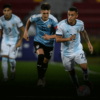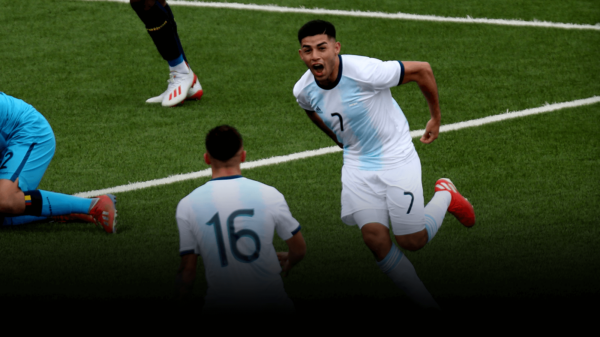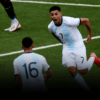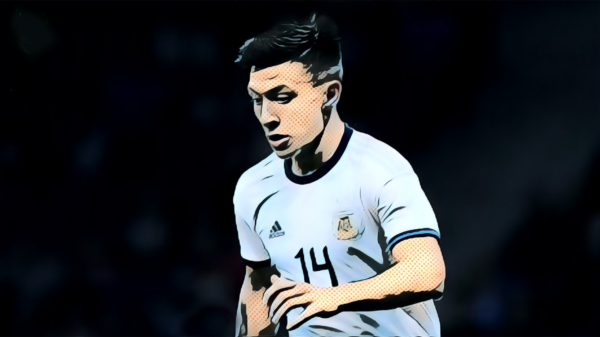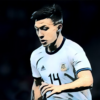As we enter the latter stages of the World Cup and into what will turn out to be some of the most historic games of the tournament, we will statistically analyse some of the key players of each team based on the systems employed & opposition using Squawka’s excellent comparison matrix.
Comparing the centre-backs
With Louis van Gaal fielding a solid back-three assisted by two full backs, the veteran Ron Vlaar has been of vast importance to the Dutch side, often playing alongside the inexperienced Bruno Martins Indi and Stefan de Vrij. Vlaar was of massive importance in the win against the current world champions and in the last game against Costa Rica. He is a stand out in an Oranje defense that was pinned to be the weak link for 2010’s losing finalists. Ron Vlaar had a very mediocre season in the English League for his West Midlands based club, but that could be prominently attributed to the lack of strongly defensive midfield players around him.

Both the players are comparable and equally intimidating in stature, rendering them as a direct threat for opposing attackers. Vlaar surpasses Garay by much when it comes to tackling and this can be attributed to his positioning at the heart of the Dutch defense.
Even though of comparable stature, Vlaar again surpasses Garay by a distance when it comes to success in aerial duels. Again, Vlaar and Garay may display comparable pass completion rates, but it is clearly the Dutchman who gets the brownie points again, considering the average pass length for the former is much more.
All in all, both defenders are equally adept in the air and will prove to be a threat in the box. Especially, Argentina will look to have Garay at the end of crosses from the likes Rojo or corner kicks.
The defensive midfield comparison
Netherlands’ reliance on counter attacks means the veteran Javier Mascherano and Lucas Biglia will be busy trying to tame the feisty Wesley Sneijder, cutting him off from Robin van Persie and Arjen Robben.

In de Jong’s absence, Daley Blind will have a major task at hand to keep Lionel Messi at bay. Netherlands could find themselves in deep waters in early minutes, if the Barcelona man is let loose and allowed to combine with Gonzalo Higuain up front.
For the majority of the tournament, Blind has been deployed at wing back, but with Kuyt firmly taking up that role, he’ll now be expected to fill in the void left by Nigel de Jong. Overall defensively, Mascherano has the slightest of edges against Blind, but the former Liverpool man will benefit from his experience playing at center back for Barcelona. Blind on the other hand put up a flailing performance against Costa Rica, when deployed in midfield. The significantly low number of forward passes when compared to Mascherano amply highlight this shortcoming.
Comparing the conductors
In the general sense, it is grossly wrong to compare two players who are deployed in an entirely different position in their respective team’s formation, but such shall not be the case here. With Angel di Maria possibly ruled out of the next clash/tournament, it is logical to compare two players who heavily influence their team’s activities upfront.

With Robin van Persie blowing hot and cold post the first two group games, Arjen Robben has been immensely responsible for orchestrating the front line of the Dutch opera. While he is officially deployed as a right winger, the Bayern talisman has often cut in, playing as a second striker or even operating at times in the hole as a number 10. Messi on the other hand, has made the number 10 role his own, often swinging to the sides, dropping deep to start attacks; dictating the tempo of Argentina’s play.
With Total Voetball firmly in the trenches, the Dutch have relied heavily on counter-attacks this time around, often using long passes to get the ball across to Robben & Co, which explains the measly 135 passes compared to Messi’s 208.
A key factor differentiating the two talisman is their positioning around the box. Robben’s movement originates on the flank, eventually cutting in deeper and ultimately supporting the front man. Precisely why, Robben has more shots from inside the box and also a higher shot accuracy.
Even though Messi takes the slightest edge in the total number of take-on’s, it is Robben who has to bear the brunt of being fouled more often. Against Costa Rica, Arjen Robben was marked by 3 or 4 men at any point of time, substantially boosting that stat in a single game, while Messi was busy sending his primary marker, Marouane Fellaini into a tizzy with every passing moment.
Thank you for reading. You can share this article through one of the buttons below. Do let us know your thoughts in the comments box below.
Also a writer at The Rational Pie, Sportskeeda and The Football Story.
- Everton on the wane: Unwrapping the problems at Goodison Park - March 19, 2015
- How do Netherlands & Argentina’s key players compare statistically? - July 9, 2014
- 3 Key Questions | Netherlands vs Costa Rica: World Cup quarter-final - July 5, 2014





















































